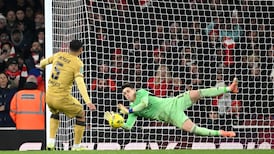On Gaelic GamesFour days to the first All-Ireland senior final of 2007 and it's interesting to look at what's on the national agenda. Sunday's meeting of Limerick and Kilkenny dominates the media coverage but not, it is safe to say, the concerns of a majority of GAA members. The same will be true in a fortnight as we begin the countdown to the football final.
These events are more accurately final ascents rather than countdowns because they take counties and public in the direction of what is the tip of a pyramid and, like all such structures, it has a wide and distant base.
Voices from beneath have become more insistently critical in recent years and at present - symmetrically, to go with a disciplinary system on its knees after a championship of reasonable systems brought low by appalling decision-making - the playing structures are once again on the table for reconsideration before the last batch have even been tried out.
Unlike the disciplinary situation, which is rapidly heading in the direction of Liam Mulvihill's suggested small specialist unit to be administered exclusively by professionals (lawyers and mediators, etc) rather than enthusiastic (or when it comes to hard calls, unenthusiastic) amateurs, the club-county interface isn't as easily solved by a deep breath and some flinty resolve.
It has become commonplace to decry the encroachment of intercounty fixtures on club activities - and the supporting evidence is everywhere. But this problem evolved for a reason.
Part of it is traceable to bad management at local level. As has been frequently pointed out, it's rarely the most successful counties that generate the most chaotic fixture lists. Even that is a logical extension of reality. The Corks and Kerrys have had to get used to factoring in intercounty success over a period of many decades. Where county teams genuinely intrude it is frequently because that is what the counties want. A glimpse of the Promised Land and everything goes on hold.
Higher up the pyramid the pressures are obvious. In the past decade or so the overwhelming majority of intercounty championship reforms have added to the fixture list. And this was a large part of their purpose.
When the original "back door" was fitted for the 1997 hurling championship its purpose was not, as is sometimes erroneously stated, to help "weaker" counties (although the different scenario in which a gifted team trapped in its province by an unsuccessful history would be less likely to freeze in provincial finals was cited as a supporting reason).
It was to give hurling All-Ireland quarter-finals and two competitive, stand-alone semi-finals rather than the double bill on which they were previously arranged. This was intended to give the game an added profile and enhanced promotional outlet.
The success of this limited dilution of the sudden-death format was noted and the qualifier system for football was the next innovation. That meant more gate receipts and more television money because of the additional programming.
But where does the GAA go in these circumstances? All around them sports rights are worth big money and broadcasters who spend those resources are also going to have enormous advertising budgets. Gaelic games are under siege from trans-national sports right across the media. Is it feasible to cut back on the association's own opportunities to promote itself? And that's not even to follow the arguments of revenue generation through gate receipts and media rights.
GAA welfare officer Páraic Duffy addressed this area in a discussion document, which is to form the basis of this autumn's special congress of rebalancing the demands of club and county. It is intended to encourage a debate in the counties.
Although Duffy's document is geared towards the problems of clubs it has inspired one response that tries to encompass concerns at both levels.
Dr John McSparran, chair of the Antrim County Board, poses the critical question of the GAA: is it an inclusive, participatory organisation or one geared towards it elite? The Antrim document was originally drawn up as a submission to the Hurling Development Committee but has been reissued because of the revelation that the National Hurling League and intercounty championships will be up for discussion again this autumn as part of the upcoming special congress.
His focus is the proposed change to the Hurling League and the argument made eloquently by his county and Dublin last year: the impossibility of playing Division Two hurling as a preparation for the MacCarthy Cup as well as the imperative to fit his proposals into Duffy's suggestion that the league be confined to seven weeks.
McSparran has been irritated by the widespread assumption that the only pressing league reform is to get Offaly out of Division Two and also concerned by the failure to progress the game outside of the elite.
The suggested recategorising of the league into four hierarchical divisions of six and one of nine makes a lot of sense. Divisions One and Two would consist of the MacCarthy Cup teams, Three and Four the Ring Cup and Five the Rackard Cup. Having a second division of teams seven to 12 would prevent counties falling off the edge of the earth as at present even if developing counties would feel that the top six would have an enhanced advantage. Annual promotion and relegation would reward form.
"The ethos of the association's founding fathers," according to the Antrim submission, "was one of participation and inclusion and we must reflect this when deciding on the structures of our competitions."
It's some circle to have to square.












